Creating a Safe and Magical Nature Exploration Corner with Solar Lights
As dusk falls, your child eagerly heads to their backyard nature corner—a patch of flowers and buzzing insects—but hesitates when shadows deepen. Darkness can dampen their curiosity, and standard outdoor lights often shine too brightly, straining young eyes or creating tripping risks in their excitement to explore. As a parent, you want to fuel their love for nature while keeping them safe. Solar-powered lights offer a gentle, child-friendly solution, illuminating their discoveries without glare or hazards. This guide, written from a parent’s perspective, shows you how to use solar lights to craft a secure, inviting nature corner that sparks your child’s wonder and eliminates safety concerns.

Why Solar Lights for a Child’s Nature Corner?
Children thrive in spaces where they can safely explore, but evening activities in a nature corner—think flower beds, insect habitats, or small veggie patches—require thoughtful lighting. Standard lights can be too intense, potentially harming young eyes, or have sharp edges that invite bumps and scrapes. Solar lights, designed with low brightness and child-friendly features, solve these issues. They’re eco-friendly, cost-effective, and easy to install, making them ideal for a family-focused outdoor space. By choosing the right lights and arranging them carefully, you create a “safe little guide” that lights up your child’s curiosity without compromising their safety.
This guide covers how to select and arrange solar lights for a child’s nature exploration corner, with practical tips, safety details, and a simple layout plan. Whether you’re setting up a small garden patch or a sprawling backyard habitat, this approach is parent-friendly and designed for kids’ safety and wonder.
Choosing the Right Solar Lights
Selecting solar lights for a child’s nature corner means prioritizing safety, gentle illumination, and durability. Here’s what to look for:
Recommended Light Types
- Low-Brightness Ground Lights (≤80 Lumens): These stake into the soil along paths or near plants, emitting a soft, warm glow (around 2700K-3000K color temperature) that’s easy on young eyes. Look for models with diffused lenses to prevent glare.
- Clip-On Fence Lights (60cm Height): These attach to low fences or railings, providing elevated light without cluttering the ground. Their height keeps them out of reach of curious hands while preventing tripping.
- Key Features:
- Motion-Sensing: Lights activate only when kids are nearby, saving energy and reducing overstimulation.
- Waterproof Rating (IP65): Ensures durability against rain or accidental spills during watering.
- Smooth, Rounded Edges: No sharp corners to avoid scrapes or cuts.
- Cool-to-Touch Materials: Prevents burns if kids touch the lights (solar lights typically stay cool compared to wired ones).
Where to Find Them
Most home improvement stores or online retailers carry solar ground lights and clip-on fence lights under $10-$20 each. Brands like Brightech or Maggift offer child-safe designs with these specs. Check product descriptions for lumen output (≤80lm) and IP65 ratings.
Arranging Solar Lights for Safety and Exploration
Proper placement of solar lights ensures your child can navigate and explore without stumbling or squinting. Here’s how to set up the lights effectively:
Layout Guidelines
- Ground Lights Along Paths:
- Space lights every 1.2 meters along exploration paths (e.g., from a flower bed to an insect observation spot).
- Push stakes firmly into soft soil, ensuring they’re flush to avoid tripping.
- Angle lights slightly toward the path to highlight walkways without shining directly into eyes.
- Fence Lights for Boundaries:
- Attach clip-on lights to fences or railings at 60cm height, above where kids might grab but low enough to light their way.
- Avoid placing fence lights directly above plants or insect habitats to prevent disturbing bugs or casting shadows on observation areas.
- Balance Coverage and Open Space:
- Use 4-6 ground lights for a 10-square-meter corner, ensuring even lighting without overcrowding.
- Keep plant areas unlit to encourage natural insect behavior, as bright lights can deter nocturnal critters.
Simple Layout Diagram
Below is a basic sketch for a 3m x 3m nature corner (drawn as a text-based diagram for clarity):
[Fence with Clip-On Lights at 60cm]
| * | * | * | * |
|-------------------------|
| G Flower Bed |
| G [Plants & Bugs] |
| G Veggie Patch |
| G |
|-------------------------|
| G Path to House |
| G |
[Ground Lights (G) every 1.2m]- G: Ground lights (≤80lm, soft glow).
- *: Clip-on fence lights (60cm high).
- Flower Bed/Veggie Patch: Unlit to preserve insect activity.
This layout lights the path and perimeter while keeping the exploration zones naturally dim, perfect for observing fireflies or beetles.
Safety Details to Protect Curious Explorers
Kids are hands-on, so safety is non-negotiable. Here’s how to ensure your solar lights are child-friendly:
- Smooth, Safe Design:
- Choose lights with no sharp edges or protruding parts. Rounded, plastic-encased models are ideal.
- Check that stakes are blunt and won’t splinter if stepped on.
- Waterproof and Durable (IP65):
- Ensure lights can withstand rain, hose splashes, or muddy hands. IP65-rated lights resist water and dust, keeping them functional even after messy play.
- Avoid Overheating Risks:
- Solar lights generate minimal heat, but confirm they use LED bulbs, which stay cool even after hours of use.
- Position lights away from flammable materials like dry leaves.
- Prevent Insect Interference:
- Place lights where insects won’t be drawn to them (e.g., away from flower beds), as bugs attracted to light could distract kids or cause minor stings.
- Use warm-toned LEDs (2700K-3000K), which attract fewer insects than cool-toned ones.
- Secure Installation:
- Ensure ground stakes are deeply anchored to resist pulling by curious hands.
- Check clip-on lights are tightly fastened to prevent falling.
These precautions make the nature corner a worry-free space where kids can explore without parents hovering.
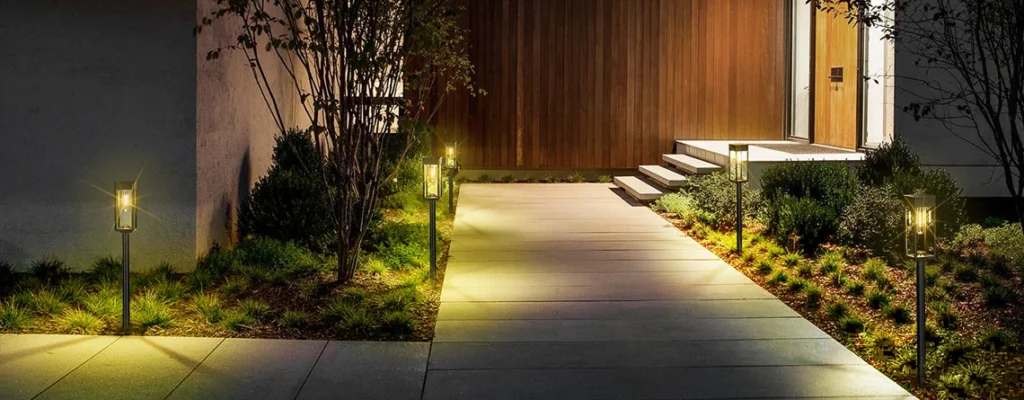
Bringing the Nature Corner to Life
Here’s how to set up the lights in a way that sparks joy and curiosity:
- Involve Your Child: Let them help choose light colors (warm white or soft amber) or place stakes (under supervision). This builds excitement for their nature corner.
- Test at Dusk: Turn on lights during twilight to ensure they’re bright enough to guide but not so intense they overwhelm. Adjust angles if needed.
- Pair with Exploration Tools: Provide a magnifying glass or small notebook for kids to record bug sightings, making the lit space a hub for discovery.
- Maintain Regularly:
- Wipe solar panels monthly with a damp cloth to keep them charging efficiently.
- Check stakes and clips after storms to ensure they’re secure.
This setup takes about an hour to install and costs $50-$100 for a small corner, depending on the number of lights.
Real-World Example: A Backyard Transformation
Consider the Carter family from North Carolina, who created a nature corner for their 7-year-old daughter, Mia, who loves watching butterflies and ants. At dusk, Mia was reluctant to explore because the area felt too dark, and a flashlight was too harsh for her eyes. The Carters installed six 80-lumen solar ground lights along a 5-meter path and four clip-on fence lights at 60cm height around their 10-square-meter garden.
The results were immediate: Mia could safely navigate to her flower bed, spotting fireflies without tripping or squinting. The soft glow didn’t disturb insects, and the IP65-rated lights held up through summer rains. The Carters spent $80 on lights and set everything up in an afternoon, with no prior experience. Mia’s evening explorations now last 30 minutes longer, and the family feels confident she’s safe.
Additional Benefits for Families
This solar light setup offers more than safety and exploration:
- Encourages Outdoor Play: Gentle lighting extends evening playtime, fostering a love for nature.
- Eco-Friendly Choice: Solar lights use no electricity, teaching kids about sustainability.
- Low Maintenance: Once installed, lights need only occasional cleaning and battery checks (every 1-2 years).
- Customizable: Add colored lenses or themed light covers (e.g., star-shaped) for extra fun without sacrificing safety.
These perks make the nature corner a lasting, joyful space for kids and parents alike.
Troubleshooting Common Issues
Here are quick fixes for potential hiccups:
- Dim Lights: Clean solar panels or move lights to sunnier spots if shaded by plants.
- Loose Stakes: Reinforce with extra soil or replace with deeper stakes.
- Overactive Motion Sensors: Adjust sensitivity (if adjustable) or reposition to avoid triggering by wind-blown plants.
- Water Damage: Confirm IP65 rating; if lights fail after rain, replace with higher-quality models.
These tips keep your setup reliable, letting kids focus on exploration.
Adapting to Your Backyard
Whether your nature corner is a small patio pot collection or a sprawling garden, this system scales. For tiny spaces, 2-3 ground lights and one fence light may suffice. For larger yards, add more lights but maintain 1.2m spacing to avoid clutter. In buggy areas, use warm-toned lights to minimize insect attraction. Check your local climate—rainy regions may need extra waterproofing, while sunny ones require optimal panel placement.
Start by mapping your child’s favorite exploration spots. Most lights are available at hardware stores or online, and installation is a fun family project that takes an afternoon.
Conclusion: Lighting the Way to Wonder
Solar lights transform a child’s nature corner into a safe, magical space for evening discoveries. With low-brightness ground lights and sturdy fence lights, you create a gentle glow that guides without glaring, protecting young eyes and preventing trips. This setup—easy to install, eco-friendly, and child-safe—lets your kids chase fireflies or inspect plants worry-free. As a parent, you’ll love the peace of mind, knowing their curiosity is lit by a “safe little guide” that’s as sustainable as it is enchanting.
Grab a few solar lights, stake them along a path, and watch your child’s nature corner come alive with wonder.

-1-2-450x231.webp)

-2-450x231.webp)
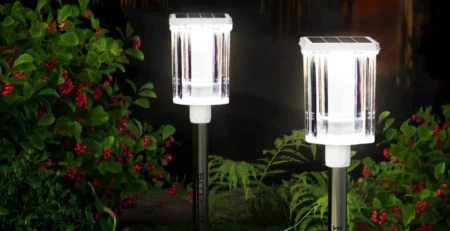

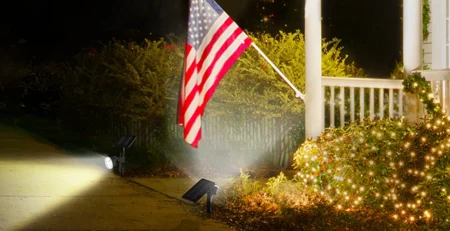
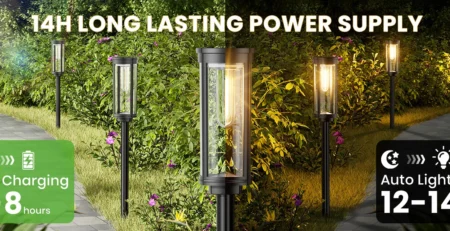
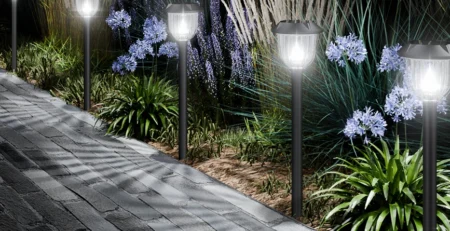
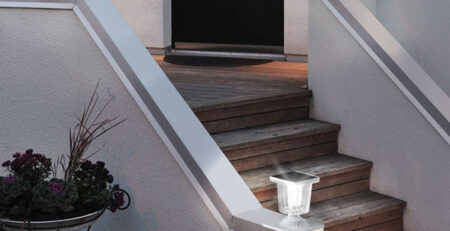

Leave a Reply